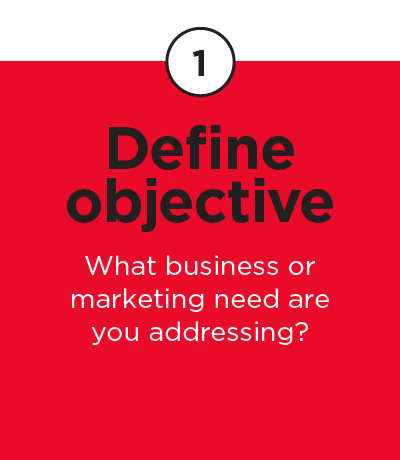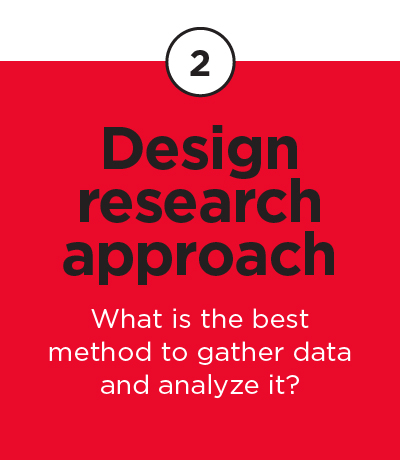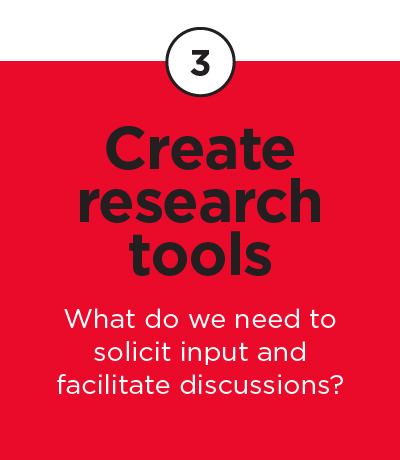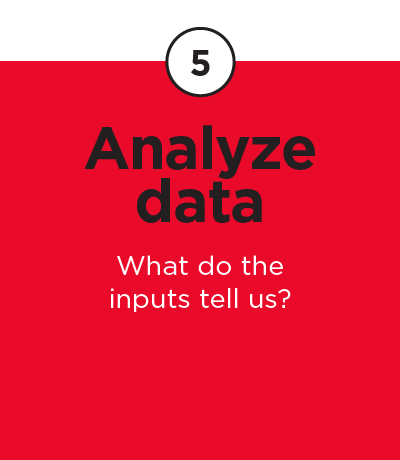B2B Strategic Consulting Services
Enhance your marketing efforts and expand your capabilities
- Our services:
- B2B Market Research,
- Market Impact,
- Product Impact,
- Sales Impact,
- Channel Impact
The demands on your time and focus are significant. Let us lighten the load.
Our strategic consulting and research services combine a common-sense approach with veteran expertise in critical thinking and problem solving to boost your brand. Whether that entails conducting research to formulate marketing strategies or supplementing areas in your product marketing and channel marketing initiatives.
We believe that while quality execution of marketing programs is essential to positive outcomes, the path to success starts with an upfront investment in research, planning, and preparation.
Read on to learn more about these services:
B2B Market Research | Market Impact | Product Impact | Sales Impact | Channel Impact
B2B Market Research: Quantitative and qualitative testing
Finding clarity about how to target and communicate with decision makers and influencers in the B2B space is difficult. Organizations evolve, roles change, and numerous people are involved in selecting and approving a solution.
Professionally conducted research enhances your understanding of market segments and customers, and informs how your business can best deliver its message or refine its approach.
We assist B2B companies with essential research
True to our more than 20-year mission, we focus on technology and industrial markets and have a deep understanding of the dynamics and behaviors of each.
Our strategy team provides clients with the necessary primary and secondary market research to guide their success. Through our investigations and analysis, our clients are able to make fully informed decisions, so they invest only in the activities that help them achieve their business goals. They rely on our findings and recommendations to guide their strategic thinking, inform tactical execution, and influence creative exploration.
Observations combined with measured input form a more complete picture
Our approach delivers the collective value of both quantitative and qualitative testing.
Quantitative research allows us to:
- Collect measurable and numeric input that helps guide key business decisions
- Objectively evaluate ideas, approaches, positioning, and messaging
- Validate assumptions and hypotheses, and measure actions with the highest propensity to deliver on brand goals
Data collection through our martech stack, combined with the first-person survey capabilities of our telemarketing team, allow us to complete accurate primary research projects quickly. We also partner with specialty organizations to conduct focused secondary research and advanced statistical analysis.
Qualitative research enables us to:
- Understand the target audience’s subjective perceptions, opinions, and responses, and probe deeper into their thinking
- Observe and interpret audience reactions and responses to ideas, approaches, positioning, and messaging
- Gain insights into audience perceptions, opinions, preferences, and motivations to better understand the actions they will likely take
Our qualitative data collection methods include conducting individual interviews and focus groups, as well as dialogue observation and participation. We build rapport, actively listen, and understand complex subject matter well enough to ask insightful questions and guide meaningful and informative conversations.
A flexible, yet structured research process
Because every project is different, we tailor activities to deliver the most appropriate, comprehensive, and cost-effective research project possible. Regardless of the size of the effort, each research project follows a six-step process.






Market Impact: Messaging and communication strategies
Developing a new solution or revising the messaging for an existing product or service? They’re both time-consuming efforts that require talent and focus. The latter of which is often in short supply as day-to-day activities, such as managing marketing programs and teams, compete for your energy.
We’re your shortcut to market
More than 20 years of B2B experience helps us know what resonates with prospects and customers and what doesn’t. Our expertise ensures your brand and solution messages get delivered in a concise, powerful, and meaningful way. We use a deep understanding of the B2B space and the priorities of key decision-makers to hone your communications, so they speak directly to your audience.
How to stand out from the crowd
Your messaging isn’t something you can just pull out of thin air. It needs to be validated by external research and inputs. We immerse ourselves in your world so we can tell the story with confidence and real-life details, not fluff.
We start with a deep dive into your business environment: from the competitive space you inhabit to the day-to-day lives of your customers. It takes a comprehensive understanding of your sales model, audience segments, and solutions. To fully achieve that, you need input from not only internal stakeholders, but customers, partners, and third-party industry experts and analysts.
The process for gathering that information includes a variety of activities:
- Direct interviews with all key stakeholders
Exploring insights into the attitudes, beliefs, and perceptions of your brand and your marketplace. - Review of your website and available collateral
Examining key assets helps assess your current messaging and the way your company currently communicates with your audience. - Inventory of competitive intelligence
Including an array of competitors and focusing on how your competitors position their business and their solutions. - Exploration of industry associations and publications
Reviewing industry publications provides context for interaction within the industry. - Executive Positioning Workshop
Conducting live working sessions that include perception mapping and a guided, highly interactive discussion to determine the qualities of the marketplace, target audience characteristics, pain points, care-abouts, and the attitudes and perceptions surrounding your brand, its solutions, key differentiators, and the emotions behind them.
The goal is to determine how to speak to your audience in their terms—and to identify what it is that only you can say to them. Specifically, the positioning statement we develop contains multiple customer value propositions that inform and direct the messaging.
Once we gain your group’s consensus and approval on the positioning statement and value propositions, we create messaging platforms that guide content development.
The four parts to creating and implementing a messaging strategy
1
Information inventory
Identify customer pain points
Articulate needs
Identify solutions (based on benefits and capabilities)
2
Platform preparation
Develop positioning statement (for internal use only)
Establish key value propositions (for external audiences)
Create messaging platforms and communication strategy
3
Identity creation & implementation
Write primary messaging content
Explore design trends (general and market-specific design research)
Create visual identity
4
Communication & coordination
Introduce messaging
Present identity
Distribute editorial and design guidelines to ensure consistent usage across client audiences, vendors, and partners
Deliver messaging through the right channels
For your messaging strategy to succeed, you need to know who you’re speaking to and how to reach them. Also critical is the cadence of your communications with prospects. By carefully crafting the right series of touchpoints, your marketing efforts can capture mindshare and increase awareness without overwhelming your audience.
Part of what we learn during our exploration of your audience and the ecosystem in which they conduct business is an understanding of their behaviors and buying habits, such as where they go to find information about solutions and services. That helps us develop customer profiles or archetypes that support a cohesive communication strategy.
Armed with that intelligence, we recommend the best channels or outlets to distribute your content, as well as the right mediums through which to tell your story. Perhaps most importantly, we orchestrate these elements to ensure that you are positioned uniformly, and your messaging is delivered consistently, across all points of customer engagement.
Executive Positioning Workshop
To find consensus and clarity, you need input from key stakeholders and internal content experts. A guided discovery conversation starts uncovering the most critical aspects of your brand’s story. Such as:
Your core audience. Who are they? What groups, and what are the titles/job functions within those groups?
Your audience’s pain points. What holds them back from success or gives them headaches? What problems do your prospects and customers face? What’s real and what’s perceived?
The market landscape. What are your competitors saying in the market? How does the audience feel about them and their solutions? What’s the current trend?
Perceptions. What do customers think about your company and your solutions? And are these perceptions true or false?
Current offerings. What solutions does your company currently offer to solve customer problems? Which of these are most unique and desirable to customers?
Product Impact: Product marketing strategies
Taking a product to market is no simple feat—whether it’s a business with a single solution focus or a large enterprise juggling an extensive portfolio of offerings.
In all instances, the necessary marketing activities are similar and numerous. And so are the pitfalls that cause delays and low market adoption.
There are no shortcuts, and a punch-list approach to managing a launch should only be a guide, not a one-size-fits-all program.
Put your solution in the best position to succeed, from pre- to post-launch
At Sudden Impact Marketing, we have the consultative expertise to fill gaps and act as a natural extension of your product team. We can assist your team in building a strategy that spans the four critical areas of launch marketing:
- Planning. This is the part when the greatest investment of time and brain power must occur. It requires market research, audience analysis and segmentation, product positioning per audience, customer journey mapping, goal defining, sales engagement planning, and offer development. We apply a systematic approach to completing each activity, ensuring everything supports the business and sales goals and is tightly integrated in a comprehensive plan.
- Pre-launch. This is the development phase of the launch. We create the launch assets and prepare all channels for push marketing activities. We also educate the sales, partners, and support teams that are integral to a successful launch.
- Launch. It’s go time. We put the plan into action and start the outreach to prospects and/or customers. The length of a launch varies. It can be frem several weeks, to several months, to a year.
- Post-launch. Shortly after initial launch activities, we begin our assessment. We examine the performance of all activities to understand how we can modify upcoming activities or where we need to revise messaging or refocus efforts to achieve optimal launch results.
Need help productizing a service?
Talk to our team about our productization methodology that addresses sales, delivery, audience segments, and marketing. It’s an approach that helps ensure a successful launch and adoption by customers.
When does a launch end?
Instead of determining a completion date, you should transition a solution launch into an ongoing marketing campaign. That way, you maintain momentum and can immediately start a lead nurturing program to continuously create sales opportunities.
Sales Impact: Sales enablement strategies
You want your sales team in the field working opportunities and closing deals.
To do that, they need the right tools and solution knowledge to meet prospects where they are in the buying process to advance the sales effort.
But what often happens is the marketing tools come up short in speaking to the prospects’ pain points or lack the content required at a particular point in the buying process.
Compounding those problems is a complicated or inadequate campaign rollout to the sales organization. If training is insufficient or confusing, sales teams and channel partners will be hesitant to promote the solution. It’s human nature to default to our individual comfort zone. For sales people, it’s selling what they understand well and have had success with in the past.
We make the complex simple and the content highly relevant
Confidence in the content and trust in the training are keys to successful sales. We partner with your product, marketing, and sales organizations to develop effective strategies to educate sales teams and provide them with the assets they need to uncover, nurture, and close deals.
To build a tailored sales enablement strategy, we consider revenue goals, audience disposition toward your solution, sales team knowledge (internal and channel teams), sales scenarios, and influencers. These variables shape the necessary messaging, level of training, and library of sales tools.
Sales tools to consider
- Sales tips—Brief summary of useful tactics when approaching a prospect/customer or furthering an opportunity
- Sales successes—Recent wins and the strategy and tactics employed to close the deal
- Sales playbooks—Campaign overview about opportunities, target audiences, objection handling, competitive information, and resources
- Sales accelerators—Brief summary of a campaign and how to get started
- Call guides—Discussion guides for cold calling prospects to initiate an opportunity
- ROI calculators—Mid-to-late buying process tool that provides financial details for prospects when considering solutions
- Customer-facing presentations—Sales presentation to address a customer’s pain point with the focused solution
- Sales productivity apps—Tools to help a mobile sales force easily access content, presentations, and ROI calculators during the customer buying process
- Sales kits—Unique sales presentations, often dimensional in nature, to promote a solution and convey its key selling points
- Emails—Offer-based personal emails from the salesperson to a prospect/customer to drive a sales effort
Channel Impact: Partner growth strategies
Channel partners extend your brand reach and amplify your message—as long as they buy in to your program and maintain that interest. After all, they want to sell what the market demands, and what doesn’t require more work than it’s worth.
We’ve been working deep in the technology partner ecosystem for more than 20 years. From recruiting and nurturing channel partners to executing lead generation and sales-enablement programs.
We know the language of partners, what motivates them, and how to capture mindshare with them. More importantly, we help ensure your solutions remain top of mind, increasing your and their success.
We develop growth strategies and programs that focus on:
- Partner recruitment
- Partner onboarding and training
- Partner training materials and sales assets
- Partner engagement
- Demand generation
- Incentive participation
Read more about our full offering for channel marketing.